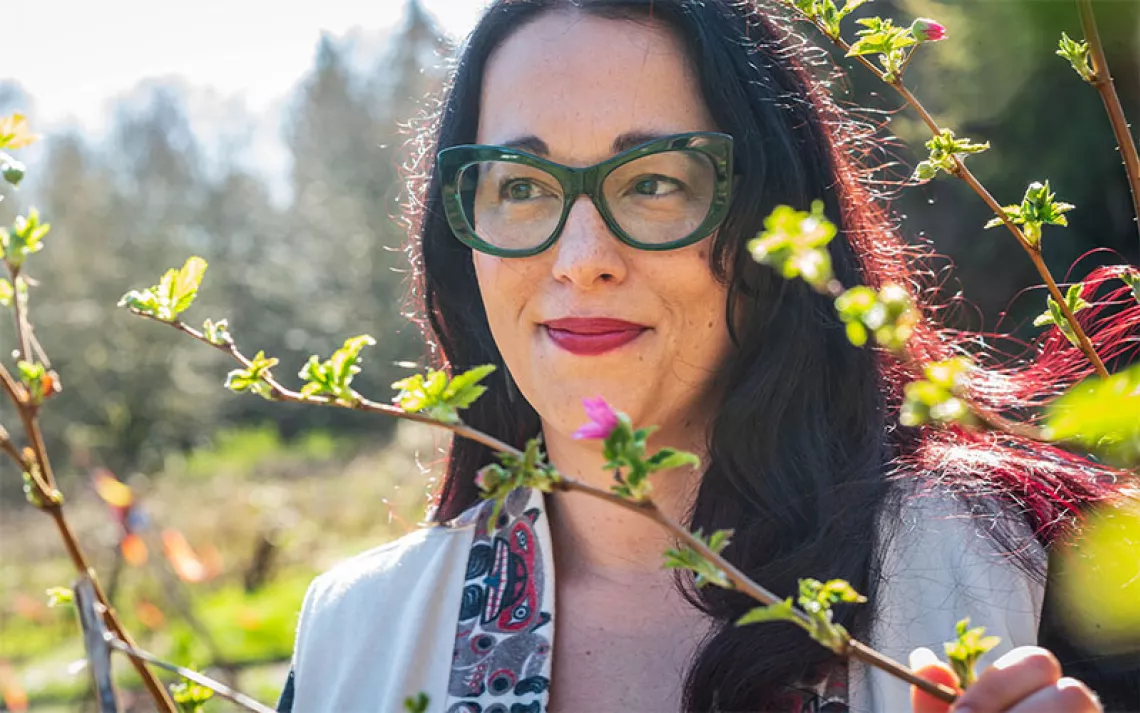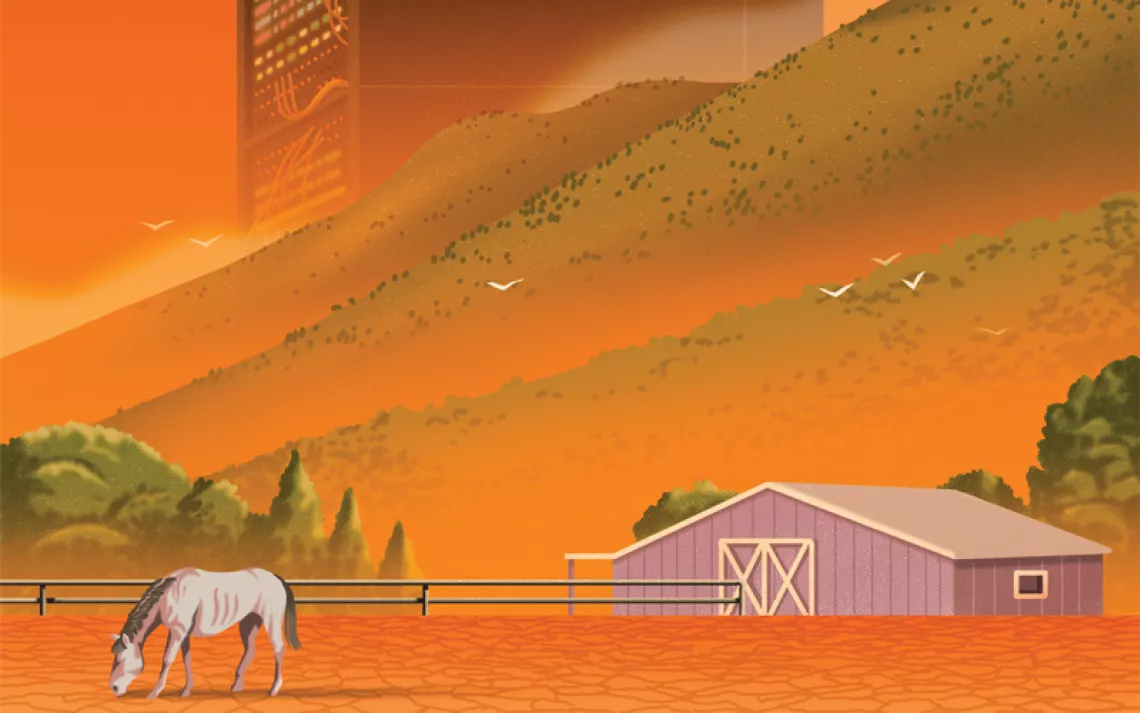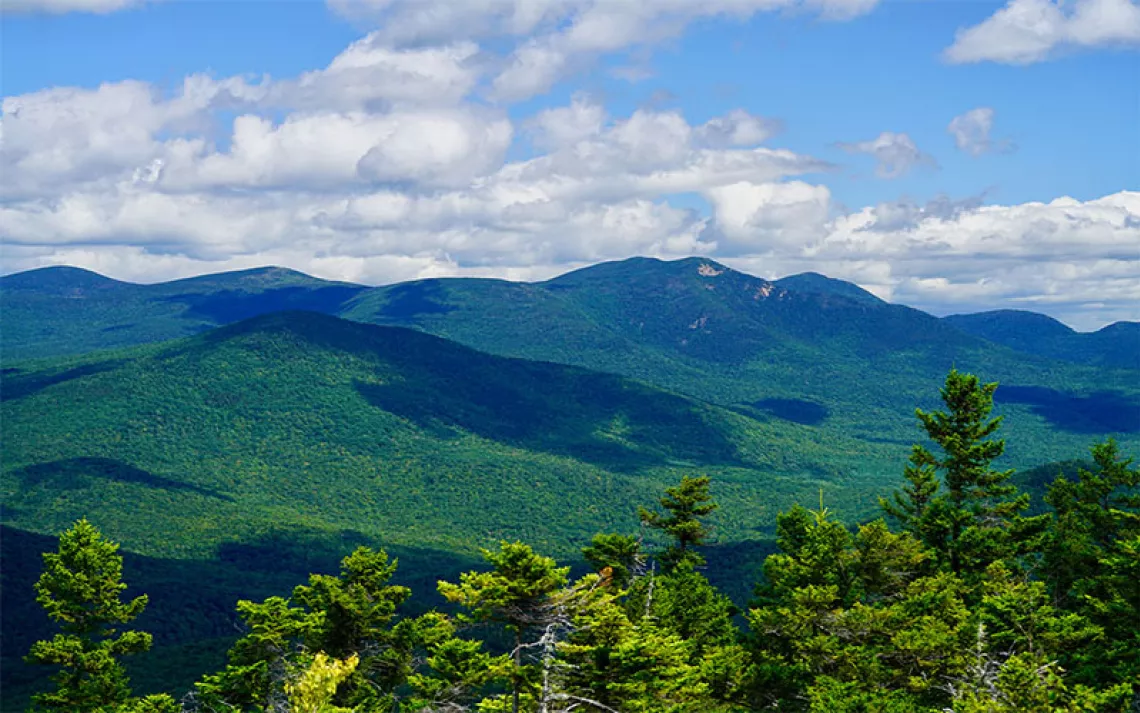DIY Meadows
Bringing back the Indigenous ecosystems that Victoria, British Columbia, lost after colonization

Photo courtesy of Kristen Miskelly
When most people tour around Victoria, British Columbia, they see an attractive city with well-kept houses and plenty of trees, flowers, and green space. But biologist Kristen Miskelly sees what’s missing: meadows.
Victoria’s picturesque Garry oak trees (Quercus garryana, a.k.a. Oregon white oak) were once linked with vibrant meadows, she says, part of an “ecocultural landscape” tended by local First Nations as part of their food system. Now, they’re more often connected by pavement. “It’s surreal, thinking about how highly converted these places are,” Miskelly says. “Sometimes I'm overwhelmed with the feeling that I'm driving over a paved meadow.”
While the asphalt isn’t going away anytime soon, there are still plenty of lawns, parks, gardens, and boulevards with the potential for restoration. It’s one of the reasons that Miskelly and her husband, James, founded Satinflower Nurseries in 2013. In addition to native plant and seed sales and consulting, the team offers workshops and other programs to help local residents restore not just the missing meadows but also woodlands, wetlands, beaches, and more.
Miskelly’s latest initiative is MeadowMakers, a seven-month program running from April to October that was launched together with Pollinator Partnership Canada (PPC) and the City of Victoria. It guides participants through the process of building a native meadow, from assessing their land to planting, monitoring, and maintenance.
There is a long history of human meadow management in the region. What in English are called Garry or prairie oak ecosystems, the W̱SÁNEĆ people describe as ḰȽO,ELENEȻ, or camas food systems, explains Tiffany Joseph, a certified pollinator steward and MeadowMakers participant whose ancestry is both Sḵx̱wu7mesh (Fresh Water people) and W̱SÁNEĆ (Saltwater people, Emerging people). Where settlers see trees, the land’s original SENĆOŦEN-speaking inhabitants see an ecosystem where camas bulbs, an important food source, grow alongside wild celery, western buttercup, and indigenous roses and berries. “We don't center the Garry oak tree, because our focus was caretaking the ḰȽO,EL,” says Joseph. “The Garry oak tree is one of its companion plants.”

Photo courtesy of Lindsay Delaronde
These meadow ecosystems are present in only a tiny area of Canada, says Miskelly, including a southeastern strip of Vancouver Island, parts of the Gulf Islands, the Fraser Valley, and stretching into Washington and Oregon in what is known as the Willamette Valley–Puget Trough–Georgia Basin ecoregion. More than 100 species that occur in these ecosystems are on British Columbia’s red and blue lists, meaning their statuses range from vulnerable to extirpated. “There’s an abundance of species at risk,” she says. “But the landmass is so small.”
Joseph joined Miskelly’s course to learn how to create meadows in her community, to look after indigenous pollinators, and to restore indigenous foods and medicines. She also gave a presentation about how Indigenous people in the region tended these ecosystems into lands that were, unsurprisingly, highly attractive to settlers looking for places to build farms and cities.
After colonization, she notes, her people were no longer able to access or manage their lands and food systems. The settlers also banned time-honored practices such as controlled burns, which helped nourish the soil and maintain the open nature of the camas meadows. “We made the meadows, we made food forests, and we made clam gardens,” Joseph says. “This land wasn't just wild. If anything, it's more wild now than it's ever been.”
Collaboration with community members like Joseph is one of the points of MeadowMakers, says Miskelly: “Restoration can be isolating and overwhelming. If you're in this cohort of people who are doing what you're doing, it’s motivating.” Finding ways to include members of local Indigenous communities in the project and to educate participants on the cultural and historical significance of native meadows has been a priority. “Kristen has had a long relationship with myself, other members of the W̱SÁNEĆ nation and other nations along this coast,” Joseph says. “That really helps in making this course in a respectful way.”
One component of the course that has been especially valuable to its 100 participants, Miskelly notes, has been the workbook, a downloadable PDF that can be either printed or filled out onscreen. For each module, a series of questions helps participants reinforce what they’ve learned and jot down plans for their meadow-to-be. “For those folks that are using it, it is a time for reflection,” Miskelly says. “And it was a way of scaling up without us having to be part of every educational experience.”
In late June, about half of the MeadowMakers cohort spent the afternoon at Victoria’s Swan Lake Christmas Hill Nature Sanctuary for their second field trip. The property includes a Garry oak—or camas—ecosystem, and the group got to taste prepared camas bulbs as a tangible connection to the Indigenous food systems that they’re contributing toward rebuilding.
At one point, Miskelly recalls, a Lorquin’s admiral, a western North American butterfly, landed on a participant’s hat. “I understand it’s random,” she says. “But we were surrounded by oceanspray shrubs, which are a host plant for Lorquin's admirals, and it highlighted so strongly this connection between people and nature.”
Joseph points out that a key benefit of the course—in addition to its extremely useful resources—is the community it is creating. “It's bringing in people from all sorts of backgrounds,” she says. “People seem really excited and passionate and appreciate each other’s company and perspectives.” Miskelly and Lora Morandin, research and conservation director at PPC, are brainstorming ways to keep nurturing this community beyond the fall end date, and trying to figure out how they can accommodate even more signups next time than this year’s 100-person cap. “A lot of people want to do something for conservation, but they’re at a loss,” says Morandin. “MeadowMakers is giving them the tools to make a really immediate difference.”
 The Magazine of The Sierra Club
The Magazine of The Sierra Club



